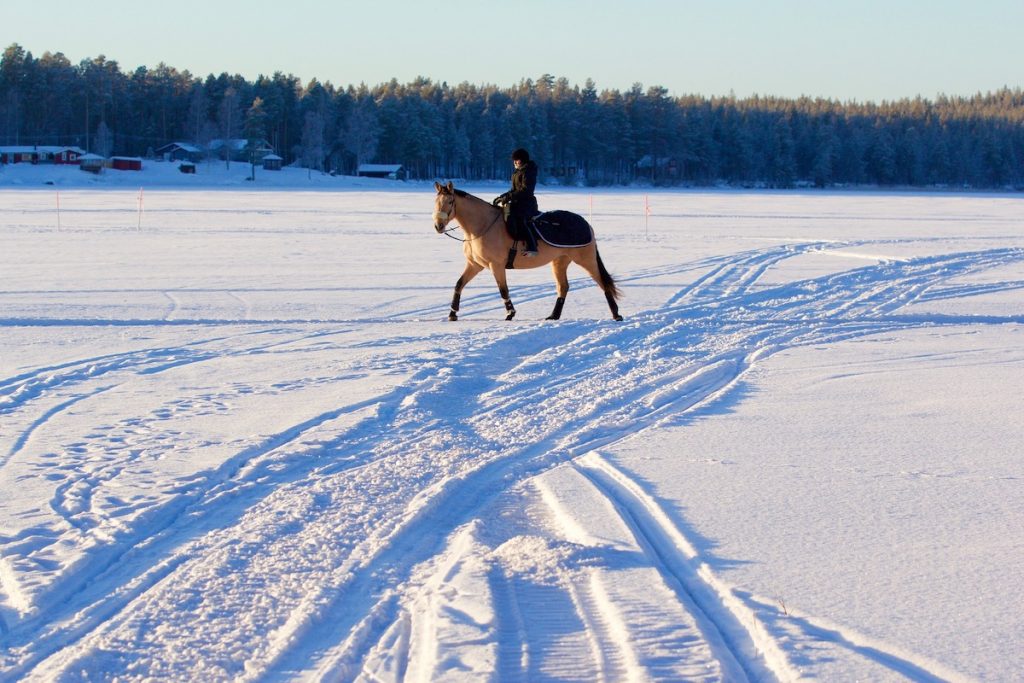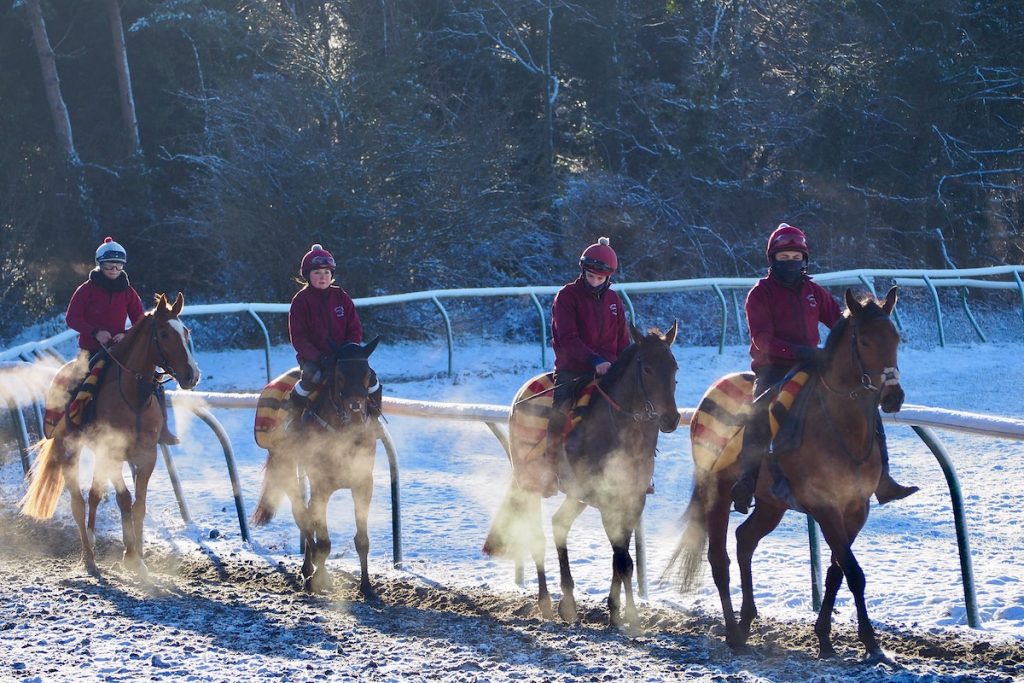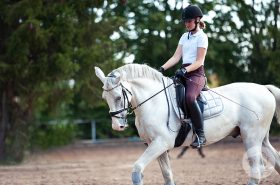Who’s ready to saddle up and go for a wintery ride!
A fresh blanket of snow may look nice to some, but to riders it can mean hazardous conditions. Riding in the snow can be beautiful and even fun. However, it must be done with caution. It can be hard to tell what’s lurking underneath or how slippery the ground is. Furthermore, snow can easily pack into your horse’s hooves and become dangerous.
Don’t hang up the saddle this winter just yet! Riding in the snow can be a wonderful experience and good exercise for your horse. Follow this advice and you’ll be on the right track.
Be mindful of depth.
Riding in deep snow can be very strenuous on your horse. A brisk walk is a good speed for deeper drifts. You may be able to trot or canter in a few places, but only for short periods. You may notice your horse is quickly out of breath from a short ride. They have to lift their legs twice as high! If the snow is really deep, you may be better off staying indoors or skipping your ride all together.
Stay away from icy grounds.
It can be a good idea to pre-walk some of the areas you plan to ride in without your horse. Keep a lookout for icy patches or extra slick spots. It’s not worth a bad spill or injury! Asphalt and cement become very slippery when wet. It’s best to avoid roads when it has snowed. Vehicles will also have a hard time passing you when the roads are covered.

Barefoot or snow pads only.
Regular shoes don’t belong in the snow. They pack densely with snowballs and become like high heels. Not only will your horse struggle to walk, but they could easily pull a muscle or tendon. Even a barefoot horse or one with snow pads can get a buildup of snow, so make sure to bring a hoof pick on your ride and check them regularly. A thin layer of petroleum jelly may help the snow to stay off.
Stay cautious of your surroundings.
Try to stick to paths you’re familiar with. Now’s not the time to go exploring with a few inches of snow on the ground. It’s hard to say what is underneath. There could be large holes, rocks, tree roots and debris. Additionally, keep in mind that the snow makes everything look very similar. It can be easy to get lost!
You can ride, drive, lunge and work your horse in-hand in the snow.
Don’t be afraid to exercise your horse in the snow, just be more cautious! It’s actually better if you keep working them. In the spring, your horse will already be conditioned and ready to compete and go for longer rides. You should plan for a nice long warm up and cool down. Your horse’s muscles are more prone to injury when they’re cold. A 10 to 15 minute warm up will increase their temperature and flexibility. You may even want to ride with a quarter sheet for the first portion of your session.
A long cool down is equally important. If your horse is really sweaty, then plan on taking the saddle off and hand walking them with a cooler. You should aim to walk them for 15 to 20 minutes at the end of each ride.
Don’t forget to enjoy yourself!
Yes, you have to worry about icy conditions and snow packing in your horse’s hooves, but don’t forget to have fun too. Make sure you really soak up the beauty of the snow. Winter is a special time of year with many unique sights!




